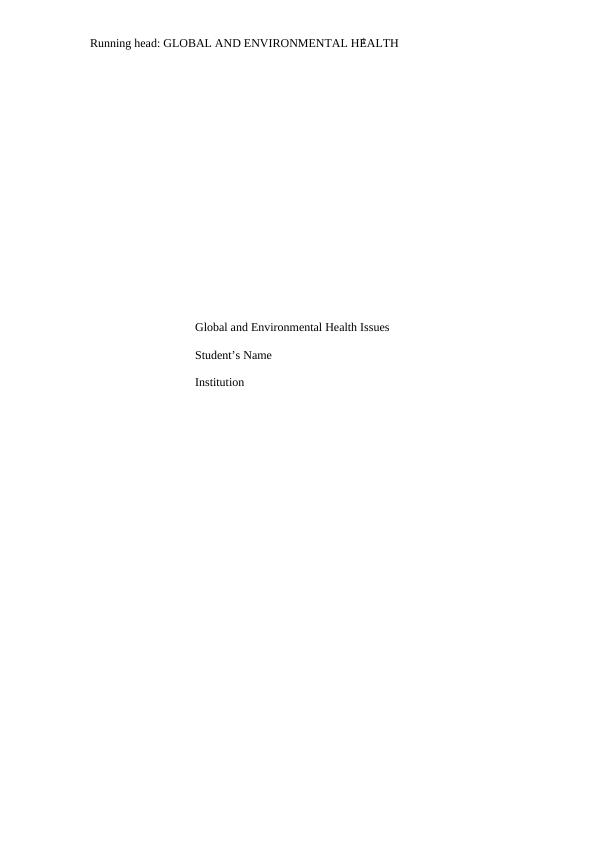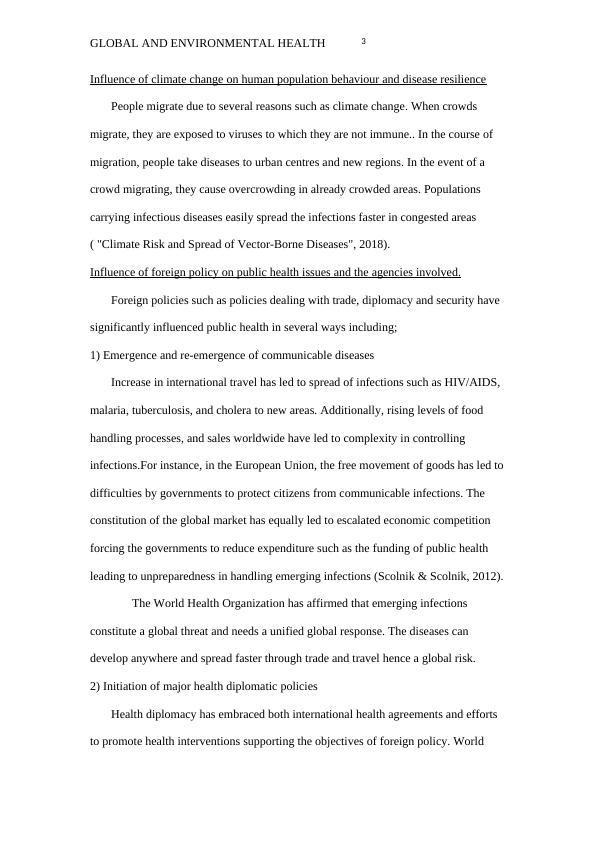Global and Environmental Health Issues
6 Pages1231 Words404 Views
Added on 2023-06-14
About This Document
This article discusses the influence of climate change on vector and host abundance, local prevalence of disease-causing parasites and pathogens, human population behavior and disease resilience, and foreign policy on public health issues and the agencies involved.
Global and Environmental Health Issues
Added on 2023-06-14
ShareRelated Documents
End of preview
Want to access all the pages? Upload your documents or become a member.
Global and Environmental Health Issues
|7
|1702
|78
The evidence of drastic changes in global climate
|7
|1796
|12
Environmental and Global Health Issues
|12
|3181
|419
Climate Change and the Problems : Report
|9
|2089
|44
Dengue Fever: Symptoms, Transmission, and Global Burden
|14
|9196
|318
Report on Malaria and Change in Climate
|5
|938
|115



